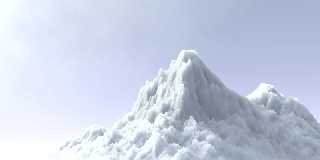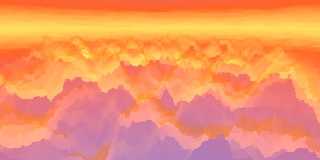 |
 |
|
 |
|
 |
|  |
|  |
|
 |
|
 |
|  |
|  |
|
 |
Hello Everyone,
It's been a while since I posted anything; my life right now is a little
messed up. Anyway...
Attached is an image showing the effects of a new technique I've been
working on for simulating snow and ice. It will also work for candles,
plastic, translucent glass, etc. I guess you could call it subsurface
scattering, if you really wanted to :) Render times are good. This image
took only 4 minutes, 45 seconds to trace (CPU unknown). That's with five 3x3
area lights. I wouldn't expect it to work with radiosity, but you never
know.
The technique uses two versions of the same object. The visible object has a
brilliance of 0 and no_shadow. The hidden object is inside the visible one.
It is transparent with fade_power, fade_distance, fade_color and absorbing
media (optional) for it's interior. It is translated slightly (downward for
an HF) to make the effect show. Area lights are needed to keep the effect
from looking like crud.
I hope to post some code with another example image to this newsroup soon.
In the meantime, somebody out there might be able to get one working with
the description I gave.
Bye for now~
~Samuel Benge
Post a reply to this message
Attachments:
Download 'translucency4_45.jpg' (25 KB)
Preview of image 'translucency4_45.jpg'

|
 |
|  |
|  |
|
 |
|
 |
|  |
|  |
|
 |
Samuel, it's really great to see you here again!
I gave up trying to make the same frozen stuff you made, for now, couldn't
seem to get the right look to it-- probably because I used only one
arealight.
Went the opposite direction and got a broiling lava kind of thing. Used a
camera normal to stir it around a little. The news was telling about Texas
having rolling power blackouts due to record heat there as I was putting it
together, too, so it made more sense to try the hot look instead of ice. Not
exactly cool here either. We could use the ice.
--
Bob H www.3digitaleyes.com
http://3digitaleyes.com/imagery/
Post a reply to this message
Attachments:
Download 'no_ice.jpg' (25 KB)
Preview of image 'no_ice.jpg'

|
 |
|  |
|  |
|
 |
|
 |
|  |
|  |
|
 |
Your image looks like a watercolor painting of an interpretation of what
hell looks like.
-DJ
Bob H wrote:
> Samuel, it's really great to see you here again!
>
> I gave up trying to make the same frozen stuff you made, for now, couldn't
> seem to get the right look to it-- probably because I used only one
> arealight.
> Went the opposite direction and got a broiling lava kind of thing. Used a
> camera normal to stir it around a little. The news was telling about Texas
> having rolling power blackouts due to record heat there as I was putting it
> together, too, so it made more sense to try the hot look instead of ice. Not
> exactly cool here either. We could use the ice.
>
>
Post a reply to this message
|
 |
|  |
|  |
|
 |
|
 |
|  |
|  |
|
 |
"Bob H" <omniverse@charter%net> wrote:
> Samuel, it's really great to see you here again!
It's good to see you too! I'm not really "here". I have to use other
people's computers to do stuff in POV-Ray and post to this web-based
newsgroup.
> I gave up trying to make the same frozen stuff you made, for now, couldn't
> seem to get the right look to it-- probably because I used only one
> arealight.
I'm sorry, I forgot to mention that the visible object has double_illuminate
as well. It makes all the difference. Like I said, I hope to be posting some
code soon, probably for both an HF version and regular CSG object.
Interesting image, BTW.
~Sam
Post a reply to this message
|
 |
|  |
|  |
|
 |
|
 |
|  |
|  |
|
 |
> Your image looks like a watercolor painting of an interpretation of
> what hell looks like.
Looks like an upside-down sunset to me.
Post a reply to this message
|
 |
|  |
|  |
|
 |
|
 |
|  |
|  |
|
 |
Great results Samuel. Aesthetic and with practical render times and
applications. Thank you for sharing your work with us.
Is it easy to adapt the lights in more conventional scene to be
compatible with this method? I assume this technique could also be
applied to a mesh object with a negative offset copy?
Skip
Post a reply to this message
|
 |
|  |
|  |
|
 |
|
 |
|  |
|  |
|
 |
Skip Talbot <Ski### [at] aol com> wrote:
> Great results Samuel. Aesthetic and with practical render times and
> applications. Thank you for sharing your work with us.
Thank you, and you're welcome. I hope to post the code soon, but I would
have to transcribe it using paper and pen ;( I was lucky to post even this
image.
> Is it easy to adapt the lights in more conventional scene to be
> compatible with this method?
It might be possible using light groups. Basic point lights might even work
with some objects....
> I assume this technique could also be
> applied to a mesh object with a negative offset copy?
Sure, I've done it. There are black line artifacts which occasionally show
up with CSG objects, but they are less common with meshes. Sometimes you
have to translate the hidden object in a random direction to get rid of
them.
-Sam com> wrote:
> Great results Samuel. Aesthetic and with practical render times and
> applications. Thank you for sharing your work with us.
Thank you, and you're welcome. I hope to post the code soon, but I would
have to transcribe it using paper and pen ;( I was lucky to post even this
image.
> Is it easy to adapt the lights in more conventional scene to be
> compatible with this method?
It might be possible using light groups. Basic point lights might even work
with some objects....
> I assume this technique could also be
> applied to a mesh object with a negative offset copy?
Sure, I've done it. There are black line artifacts which occasionally show
up with CSG objects, but they are less common with meshes. Sometimes you
have to translate the hidden object in a random direction to get rid of
them.
-Sam
Post a reply to this message
|
 |
|  |
|  |
|
 |
|
 |
|  |




![]()